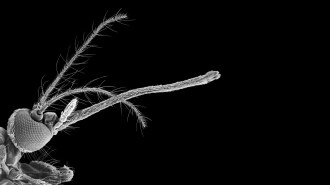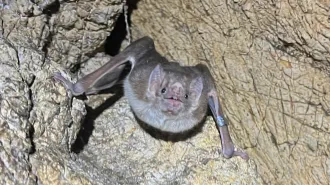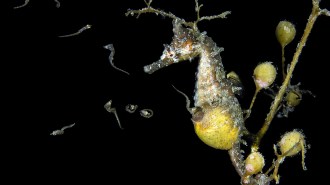Tiger swallowtail genome gives clues to insect’s stinky defense

As caterpillars, Eastern tiger swallowtails have a forked organ on their heads that emits smelly compounds to deter predators. A look at the insect’s genome explains how it may have evolved this stinky biological warfare.
Edith Smith/Shady Oak Butterfly Farm








